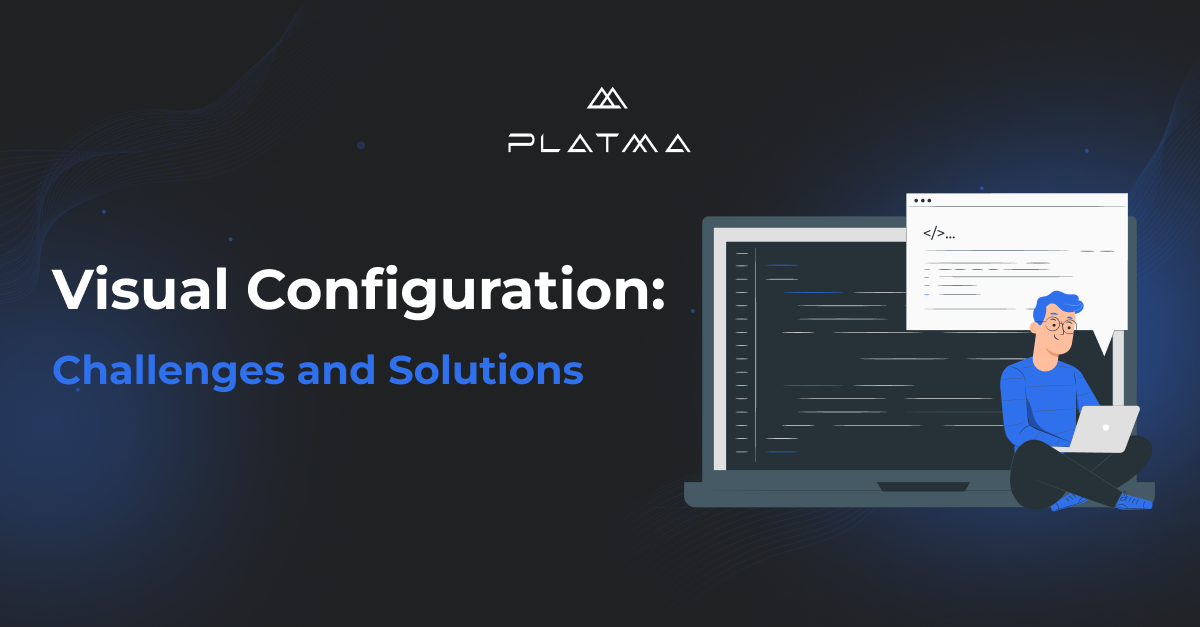In today’s fast-paced digital landscape, organizations are constantly striving to develop and deploy software applications quickly and efficiently. To meet this demand, low-code platforms have gained immense popularity. Among them, Platma stands out as a leading low-code platform that empowers businesses to accelerate their application development process. One of the key features offered by Platma is visual configuration, which enables users to design and customize applications without writing extensive code. However, this article aims to shed light on the challenges associated with visual configuration and explore the solutions provided by Platma.
Challenges in Visual Configuration:
- Complexity of Business Logic: Visual configuration allows users to define the behavior and logic of their applications visually. However, complex business processes often require intricate logic and decision-making capabilities. Translating these complexities into a visual interface can be challenging, as it requires careful planning and design to ensure clarity and maintainability. Platma addresses this challenge by providing a wide range of pre-built components and logical operators, making it easier to handle complex business logic within the visual configuration environment.
- Flexibility and Customization: While low-code platforms offer rapid application development, there is always a need for flexibility and customization to meet specific business requirements. Visual configuration can sometimes impose limitations on customization options, restricting the ability to create truly unique applications. Platma recognizes this challenge and allows users to seamlessly integrate custom code and extend the capabilities of visual configurations. By leveraging its extensibility features, developers can augment the visual configuration with custom code snippets to meet specific needs.
- Scalability and Performance: As applications built using visual configuration evolve and grow in complexity, ensuring scalability and optimal performance becomes crucial. Visual configuration tools need to generate efficient code and handle large-scale applications without compromising performance. Platma employs advanced optimization techniques, such as intelligent code generation and runtime optimizations, to produce highly performant applications. Additionally, Platma’s modular architecture allows applications to scale effortlessly by breaking them into smaller components that can be independently managed and deployed.
- Collaboration and Version Control: Visual configuration often involves multiple stakeholders collaborating on application development. Efficient collaboration and version control become challenging when multiple team members are simultaneously working on visual configurations. Platma tackles this challenge by providing seamless collaboration features, allowing teams to work together in real-time. Furthermore, Platma offers version control capabilities, enabling developers to track changes, roll back to previous versions, and merge configurations seamlessly.
Solutions Provided by Platma:
- Intuitive Visual Interface: Platma boasts a user-friendly and intuitive visual interface that simplifies the process of designing applications. Its drag-and-drop functionality, coupled with a rich library of pre-built components, empowers users to create visually appealing interfaces effortlessly. Platma’s visual configuration interface ensures that even users with limited coding knowledge can build applications without any hassle.
- Customization and Extensibility: To address the need for customization, Platma enables the integration of custom code within visual configurations. This flexibility allows developers to extend the capabilities of visual configurations and incorporate unique functionality. With the ability to seamlessly blend custom code with visual configurations, developers can create applications that precisely meet their requirements.
- Performance Optimization: Platma focuses on generating optimized code to ensure high performance of applications built using visual configuration. By employing intelligent code generation techniques, Platma minimizes redundant operations and optimizes resource utilization. This approach results in faster and more efficient applications that can handle complex business processes effectively.
- Collaborative Development Environment: Platma offers a collaborative development environment that allows teams to work together seamlessly. Multiple team members can simultaneously contribute to the visual configuration, enhancing productivity and fostering efficient collaboration. With built-in version control features, developers can effortlessly manage changes, track revisions, and avoid conflicts, ensuring a smooth development process.
Visual configuration is a powerful feature offered by Platma, enabling businesses to rapidly build and customize applications without extensive coding. While challenges such as complex business logic, customization limitations, scalability, and collaboration exist, Platma addresses them through intuitive interfaces, customization options, performance optimization, and collaborative development environments. By leveraging Platma’s visual configuration capabilities and robust solutions, organizations can accelerate their application development process, enhance productivity, and achieve their digital transformation goals.






